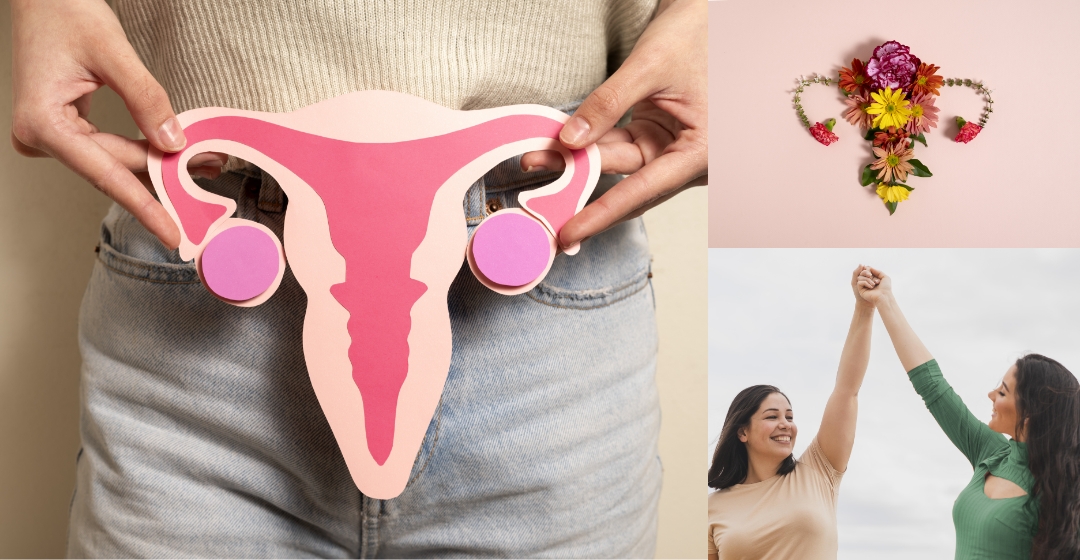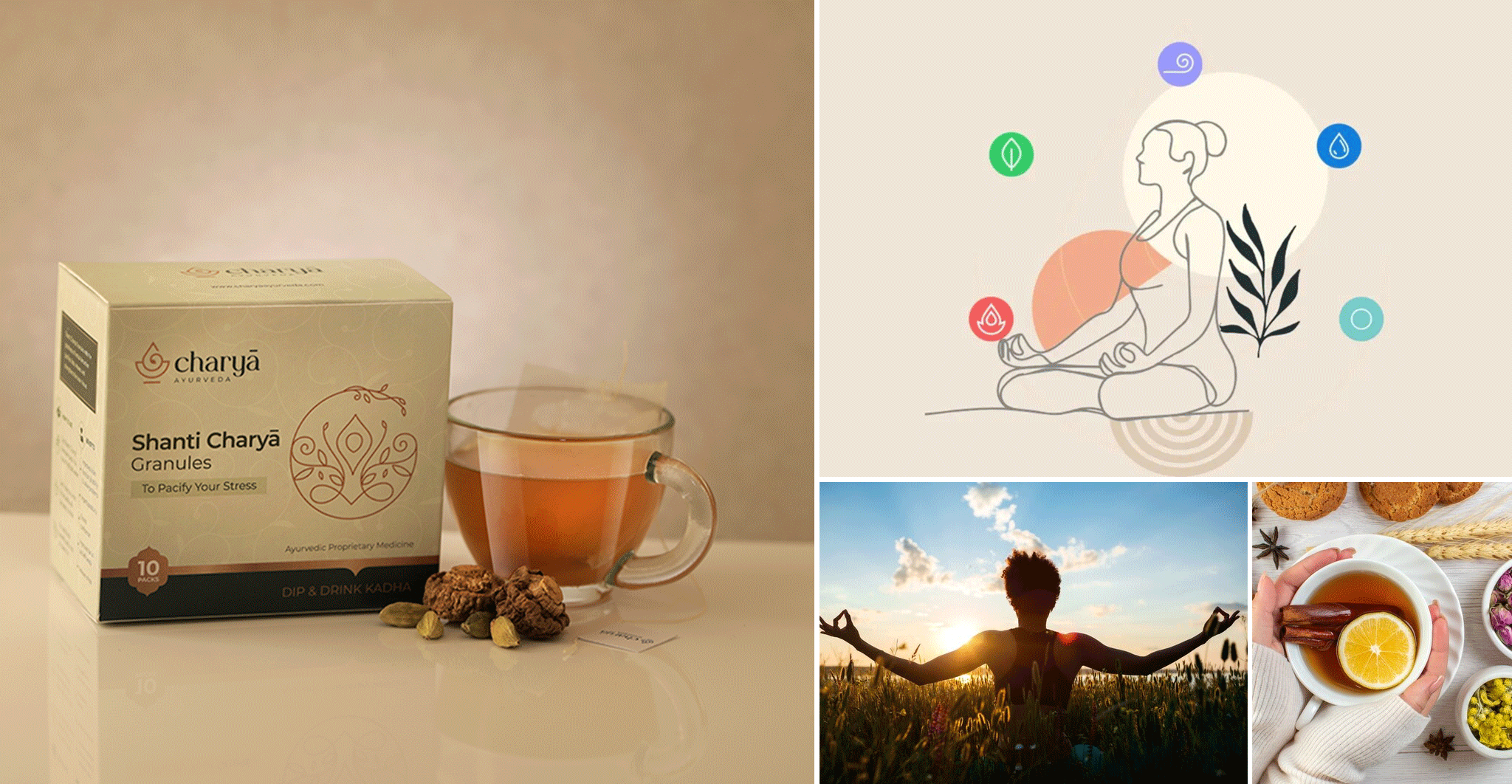Your cart is currently empty!
Healthy Uterus! Healthy You! Ayurvedic Insights For Female Health

The beauty Discover the significance of the uterus in women’s health and learn Ayurvedic tips for healthy and balanced uterine well-being. Explore yoga, diet, and self-care practices for optimal female health. The uterus, also known as the “Garbhashaya” in Ayurveda or the “Womb,” is a remarkable female organ that holds significant importance in a woman’s body. It plays multiple roles in maintaining overall well-being, hormonal balance, and reproduction. Let’s understand more about the uterus and discover how to keep it healthy and safe.
The Role of Uterus in Woman’s Health:
The uterus is a crucial reproductive organ situated in the pelvic cavity, positioned between the bladder and the rectum. Its primary function is to support the growth and development of the fetus during pregnancy. Additionally, it plays a significant role in the menstrual cycle, which is essential for reproductive health.
Ayurveda emphasizes the balance of doshas (the five energies) in the uterus for overall well-being. A healthy uterus is key to a healthy body and mind.

The Uterus According to Ayurveda:
According to Ayurvedic texts, the uterus bears a resemblance to the mouth of a fish called “rohita.” This comparison might have two reasons. Firstly, both the fish and the uterus have a triangular shape and a hollow interior. Secondly, the cervix of the uterus, which is the opening of the uterus, resembles the fleshy and hanging lips of a Rohita fish’s mouth.
Yoga Asanas for a Healthy Uterus:
Yoga can significantly contribute to uterine wellness by improving circulation, reducing stress, and enhancing overall well-being. Here are some beneficial yoga asanas for a healthy uterus:
● Butterfly Pose (Baddha Konasana)
● Reclining Bound Angle Pose (Supta Baddha Konasana)
● Bhujangasana (Cobra Pose)
● Malasana (Garland Pose)
● Setu Bandhasana (Bridge Pose)
● Viparita Karani (Legs-Up-the-Wall Pose)
● Paschimottanasana (Seated Forward Bend)
● Janu Sirsana (Head-to-Knee Forward Bend)
● Moola Bandha Asana (Root Lock Asana)
● Hanumanasana (Front Split Pose)
● Yoni Mudra (Womb Gesture)

Self-Care Routine for Uterine Wellness:
Prioritizing and maintaining the health of your uterus is crucial for your overall well-being. Here are some essential steps to include in your self-care routine:
● Eat a balanced diet
● Include Ghee
● Practice Nabhi Puran (navel oiling)
● Exercise regularly
● Ensure adequate rest or minimal exertion during periods
● Practice good hygiene
● Get enough sleep
● Limit exposure to toxins
● Schedule regular check-ups
Tips for a Healthy Uterus:
Here are some additional tips to maintain a healthy uterus:
● Avoid sitting for prolonged periods, especially in one position
● Follow a nutritious diet and eat meals on time
● Incorporate ghee (clarified butter) into your diet, as it is believed to be beneficial for uterine health
● Practice navel oiling with warm oil regularly
● Engage in lower abdominal exercises to strengthen the pelvic muscles
● Avoid processed and packaged foods, as they may contain harmful additives
Foods for a Healthy Uterus:
Incorporating certain foods into your diet can contribute to a healthy uterus. Include the following in your meals:
● Seasonal and local fruits and veggies
● Avoid seedless or genetically modified foods
● Whole Grains: Provide a good source of fiber and nutrients
● Nuts and Seeds: Offer a healthy dose of essential fatty acids
● Herbal Teas: Certain herbal teas can support uterine health

Fascinating Facts about the Uterus:
● Your Uterus Creates Another Organ During Pregnancy: The placenta, an entire organ, is formed by the uterus during pregnancy. It plays a vital role in nourishing the fetus.
● Uterus Size During Pregnancy: The uterus can expand to the size of a watermelon during pregnancy, starting from the moment of conception.
● Some Women Have Two Uteruses: Uterus didelphys is a rare congenital condition where some women are born with two uteruses.
● Uterus Transplant: For women born without a uterus, medical technology allows for uterus transplants, enabling them to conceive.
● Mayer-Rokitansky Küster-Hauser Syndrome (MRKH): Some women are born without a uterus due to this rare syndrome.
Uterus Cleansing According to Ayurveda:
Uterus cleansing in Ayurveda involves the cleansing and nourishment of the reproductive organs and balancing the doshas. It is typically done through specific Ayurvedic treatments, dietary changes, and herbal remedies. Consulting an experienced Ayurvedic practitioner is essential for personalized and safe cleansing.
Tridosha’s Relation with Uterus Wellbeing:
The concept of Tridosha forms the foundation of understanding health and well-being. According to Ayurveda, the human body is composed of three vital energies known as “Doshas.” These Doshas are Vata, Pitta, and Kapha, and they play a significant role in maintaining overall health, including the well-being of the uterus.
Vata Dosha and Uterus Wellbeing:
Vata is associated with the elements of air and ether. In the context of the uterus, a balanced Vata Dosha supports healthy menstruation, proper hormonal balance, and regularity in the menstrual cycle. When Vata is imbalanced, it can lead to irregular menstrual cycles, painful periods, and difficulty in conception. To maintain a healthy uterus, it is crucial to keep Vata Dosha in balance through an appropriate diet, lifestyle, and Ayurvedic treatments.

Pitta Dosha and Uterus Wellbeing:
Pitta Dosha is associated with the elements of fire and water. In terms of the uterus, a balanced Pitta Dosha ensures proper digestion, conversion and absorption of nutrients essential for reproductive health.
Imbalanced Pitta can lead to inflammation in the reproductive system, causing conditions like endometriosis and cervical erosion, excessive bleeding during periods. To promote uterine well-being, it is essential to keep Pitta Dosha in check through a cooling diet, stress management, and Ayurvedic therapies.
Kapha Dosha and Uterus Wellbeing:
Kapha Dosha is associated with the elements of water and earth. In the context of the uterus, a balanced Kapha Dosha ensures proper nourishment and lubrication of the reproductive organs.
Excess Kapha can lead to swelling, vaginal discharge ,and congestion in the reproductive system. To support uterine well-being, it is important to balance Kapha Dosha through regular exercise, warm and light foods, and Ayurvedic herbal remedies.
Uterus Wellbeing According to Ayurveda: In conclusion, the uterus, or “Garbhashaya,” is a remarkable organ vital to a woman’s health and reproduction. Ayurveda’s holistic approach emphasizes the balance of Tridosha – Vata, Pitta, & Kapha – to support uterine well-being. It recommends a holistic approach that includes a proper diet, lifestyle practices, and herbal remedies to support uterine health.

Recommended Products
More from Charya

5 Ayurvedic Brightening Herbs For Glowing Skin
Vd. Shweta Labde

Know Your Charyā- Your Ayurvedic Wellness Code
Shweta Labde

Hemant Ritucharya- An Ayurvedic Guide To Holistic Winter Routine
Vd. Shweta Labde










Leave a Comment